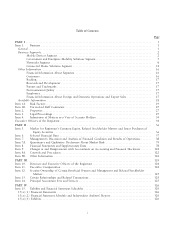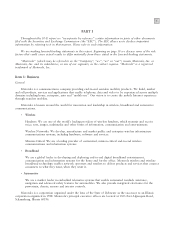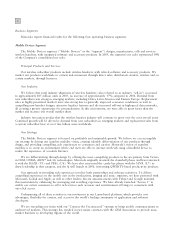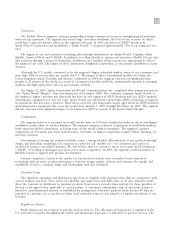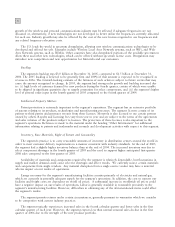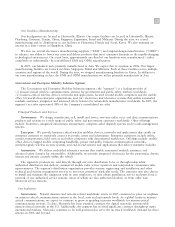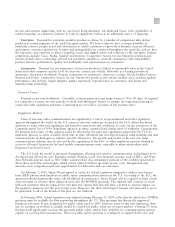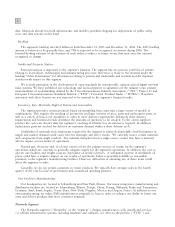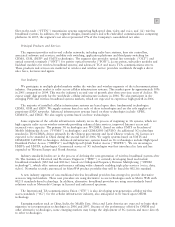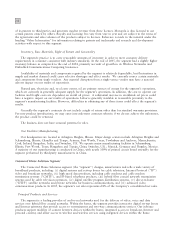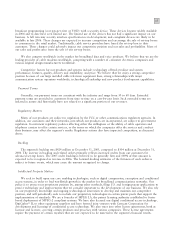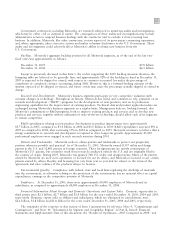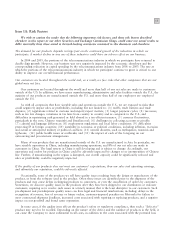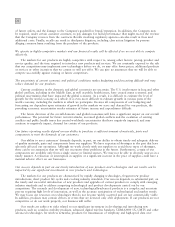Motorola 2005 Annual Report Download - page 17
Download and view the complete annual report
Please find page 17 of the 2005 Motorola annual report below. You can navigate through the pages in the report by either clicking on the pages listed below, or by using the keyword search tool below to find specific information within the annual report.
10
Our Strategy
We are executing on a strategy to enable seamless mobility across multiple access technologies, including
cellular, PON and wireless broadband. The segment continues to invest in the major cellular radio access
technologies: CDMA, GSM, iDEN», CDMA2000 1x, GPRS, WiDEN, EDGE, CDMA2000 1x EVDO, UMTS,
HSDPA and HSUPA. Wireline carriers such as Verizon, are expanding their strategic footprint. We are investing in
PON technologies which will enable these carriers to deliver voice, data and video over fiber, replacing traditional
copper wire connections.
Many cellular operators, particularly in emerging markets, have not begun their migration to next-generation
access technologies. In addition, wireline operators, such as cable providers, are looking for new ways to enhance
their customer offering with the addition of a wireless option. Because of its projected early availability, low cost
and superior performance, wireless broadband technology based on IEEE standard 802.16e represents a compelling
alternative. In 2005, we announced our portfolio of MotoWi4 wireless broadband products based on this IEEE
standard to address this fast growing market opportunity.
A new industry segment of non-traditional wireless providers has also emerged. These new providers are using
alternative access technologies such as Metro WiFi which is based on the IEEE's 802.11 standard to blanket entire
geographic areas with broadband wireless coverage. Some alternative broadband providers are also using non-
standards based solutions. We continue to invest in our MotoWi4 Canopy product which enables low cost, high
speed Internet access to customers served by these providers.
In addition to access, the seamless mobility strategy requires a converged core network capable of delivering a
multiplicity of applications and services to consumers across multiple access technologies. This strategy enables
consumers to receive these services seamlessly as they move from one access methodology to another. The segment
will leverage its strong position in multiple access technologies and cellular Internet protocol (""IP'') core network
capability to deliver next-generation converged core networks based on IP Multimedia Subsystem (""IMS'')
architectures supporting seamless mobility.
To facilitate rapid delivery of applications and services to consumers through the IMS core, Networks has
developed the Global Applications Management Architecture (""GAMA'') platform providing a standard interface
allowing third-party providers easy integration and deployment of their value-added services. Examples of these
IP-based services include voice over IP (""VoIP''), Push-to-Talk, multi-party gaming, videoconferencing, messaging
and content sharing. Networks has also compiled its own suite of internally, as well as externally, developed
applications which will complete our end-to-end product offering.
Our network products are further enhanced by a portfolio of services that reduce operator capital expenditure
requirements, increase network capacity and improve system quality. These quality improvements benefit operators
through increased customer satisfaction, greater usage and lower churn, all of which can have a positive impact on
operator financial results.
We also continue to build on our industry-leading position in push-to-talk over cellular (""PoC'') technology.
We have executed agreements to launch our PoC product application on both GSM and CDMA2000 networks.
Networks deployed PoC technology for 44 wireless carriers in 33 countries and territories in 2005. In addition,
Networks has begun executing on its seamless mobility strategy with major contract wins in PON and wireless
broadband. In 2005, we announced an agreement with Verizon to supply FTTP access equipment and related
services enabling their triple play offering (voice, data and video). We also signed a contract with Earthlink to
deliver equipment and services enabling them to become a Metro WiFi broadband provider in Philadelphia,
Pennsylvania, Anaheim, California and other cities.
Customers
Due to the nature of the segment's business, the agreements we enter into are primarily long-term contracts
with major operators that require sizeable investments by our customers. In 2005, five customers represented
approximately 56% of the segment's net sales (Sprint Nextel; KDDI, a service provider in Japan; China Mobile;
Verizon; and China Unicom). The loss of any of the segment's large customers, in particular these customers, could
have a material adverse effect on the segment's business. Further, because contracts are long-term, the loss of a
major customer would impact revenue and earnings over several quarters.


